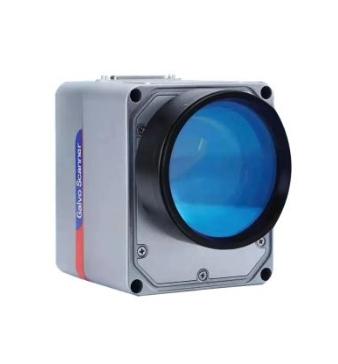Mastering Mirror Galvanometers in Laser Scanning Systems

In the world of precision optics and laser displays, mirror galvanometers stand as the unsung heroes that steer beams of light with astonishing speed and accuracy. At their core, mirror galvanometers are electromechanical devices designed to convert electrical current into angular motion. When integrated into laser scanning systems, they deflect laser beams across two axes—X and Y—to create dynamic patterns, intricate graphics, and high-resolution images.
1. How Mirror Galvanometers Work
A mirror galvanometer consists of a small, lightweight mirror mounted on a torsion spring, suspended between two electromagnetic coils. When a current passes through the coils, it generates a magnetic field that interacts with permanent magnets, causing the mirror assembly to rotate. By precisely controlling the current waveform, the mirror’s angle can be modulated in real time, enabling rapid deflection of laser beams.
Key Components
Torsion Spring: Provides restoring torque to return the mirror to its neutral position.
Electromagnetic Coils: Generate the driving torque proportional to input current.
Lightweight Mirror: Minimizes inertia for fast response times.
Control Electronics
Dedicated analog or digital drivers convert input signals (often from a DAC or FPGA) into the precise current needed to steer the mirror. Closed-loop systems incorporate position sensors—such as optical encoders or capacitive sensors—to continuously monitor mirror angle and correct any deviations.
2. Performance Metrics That Matter
When selecting a galvanometer for laser scanning, engineers focus on three critical performance metrics:
Bandwidth (Resonant Frequency)
Defines the maximum scanning speed. Typical mirror galvanometers boast resonant frequencies from 1 kHz up to 10 kHz.
Angular Range
The total deflection angle (e.g., ±15° mechanical) dictates the beam’s sweep across the target plane.
Settling Time
How quickly the mirror stabilizes at a new angle after a step input, impacting positional accuracy and image fidelity.
High-end systems may prioritize bandwidth for ultra-fast engraving or high-refresh-rate light shows, while others emphasize low settling time for crisp edges and minimal distortion.
3. Applications in Laser Displays and Microscopy
Laser Light Shows
Mirror galvanometers enable dazzling laser projections by scanning beams at kilohertz frequencies. Paired with sophisticated software, they paint vibrant shapes, text, and animations against fog or screen surfaces.
3D and Confocal Microscopy
In scientific imaging, galvanometer-driven scanners sweep excitation lasers across biological samples. High precision and repeatability yield sharper images with minimal photodamage.
Laser Marking and Engraving
Industrial engraving systems rely on dual-axis galvanometers to trace patterns onto metals, plastics, and ceramics with sub-100 µm accuracy.
4. Best Practices for Integration
Thermal Management
High-power coils generate heat; integrate heatsinks or active cooling to maintain performance.
Vibration Isolation
Minimize external vibrations with damped mounts to preserve image stability.
Signal Integrity
Use shielded cables and low-noise drivers to prevent electromagnetic interference from corrupting position feedback.
Conclusion
Mirror galvanometers are pivotal for any application requiring rapid, precise beam steering. By understanding their operating principles, performance characteristics, and integration best practices, engineers and hobbyists alike can harness their full potential—whether crafting spectacular laser shows or unveiling the hidden intricacies of microscopic worlds.
- Art
- Causes
- Crafts
- Dance
- Drinks
- Film
- Fitness
- Food
- Games
- Gardening
- Health
- Home
- Literature
- Music
- Networking
- Other
- Party
- Religion
- Shopping
- Sports
- Theater
- Wellness


